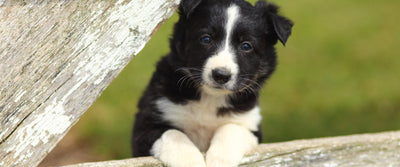Siberian Husky is a medium-sized breed and a great working dog. This active and resilient breed is able to withstand temperatures as low as −50 to −60 °C thanks to its thick double coat.
 Country of origin: Country of origin: |
Siberia |
 FCI group: FCI group: |
Group 5 Spitz and Primitive dogs, Section 1 Nordic Sledge Dogs #270 |
 Temperament: Temperament: |
Intelligent, Alert, Outgoing, Friendly, Gentle |
 Colors: Colors: |
White, Black, Agouti, Piebald, Black & Tan, Splash, Sable, Copper, Black & White, Grey, Silver, Brown, Red |
 Weight: Weight: |
Female: 16–23 kg, Male: 20–27 kg |
 Height: Height: |
Female: 50–56 cm, Male: 54–60 cm |
 Life expectancy: Life expectancy: |
from 12 to 15 years |
Siberian Husky puppies
Siberian Huskies are an independent and headstrong breed. Huskies are pack dogs which makes them a challenge to train. These dogs can challenge the owner’s leadership and because of that should never be treated as equals. Siberian Huskies can be quite aggressive in their pursuit of leadership and establishing a hierarchy early on is vital for further training. Huskies have natural behavioural traits that are quite destructive. Establishing a strong leader position will allow you to train your dog not to engage in activities such as biting, chewing or digging. Always reward good behaviour and discipline your dog with limiting treats - don’t give him what he wants unless he obeys. Make a set of rules for your dog and be very consistent in following them. Always give your puppy a healthy and well-balanced diet - Husse Valp Plus will be a great choice for a full of energy dog like a Husky.


Siberian Husky’s nutrition
Most of the time Siberian Huskies are quite good at watching their own food intake to regulate how much calories they consume. However, this doesn’t mean that this dog breed will not overeat. Huskies have a tendency to put on weight rather quickly and it can be challenging for them to get back to their healthy weight. Overweight Huskies usually have a shorter life span, so keeping them on a well-balanced diet with a proper amount of exercise is needed. As a breed, Siberian Huskies are stubborn and individualistic and because of that, they may be very picky with their food. Husky may choose not to eat because of being bored with eating the same thing all the time. Feeding Huskies ad libitum may not be the best practice. With that in mind, you should never switch your dog’s food suddenly. It is advised to introduce the new food gradually to allow the digestive system to adapt to the new nutrient composition. We recommend the grain-free Husse line (Opus Farm or Opus Ocean) since those are the products with the highest palatability.
Detailed description of Siberian Husky
Siberian Husky is a middle-sized dog breed belonging to the Spitz genetic family. They have very distinctive markings and are very similar in appearance to a larger in size Alaskan Malamute.
Genesis
Siberian Huskies were originally bred by the Chukchi people in eastern Siberia and kept as sledge-pulling and companion dogs for their families. Climate changes forced Chukchi people to expand their hunting ground, so they needed resilient sledge dogs capable of pulling sledges over vast expanses of frozen ground in temperatures dropping as low as -60 °C. In 1908 Huskies were brought to Alaska for sledge-dog racing. The breed gained its popularity
in 1925 when a relay of Siberian Huskies led by Leonhard Seppala ran 658 miles in only five and a half days to rush a lifesaving serum to Nome, Alaska, to battle the diphtheria epidemic.
Appearance
When it comes to appearance, Siberian Huskies have a lot in common with the bigger sized Alaskan Malamutes. Huskies almond-shaped eyes are typically blue or brown, or sometimes one of each colour. Huskies have a double coat, allowing them to withstand the extremely cold climate and keeping them cool during summer. This breed comes in a variety of colours as well as patterns, but facial markings and white paws are one of the breed’s distinctive features. Siberian Huskies have pointy and erect ears and a bushy tail, which they often use to cover their nose during sleep.


Behaviour
Siberian Huskies are notorious for being hard to train, and they need a firm owner, who can establish a position of the leader for himself. Huskies have a strong prey drive, so in order to be trusted with other small animals at home, they need to be trained in that regard. Without proper attention and exercise, this breed can show some destructive behaviour, such as chewing, digging or biting. Siberian Huskies are known for being stunning escape artists since they can chew through, dig under or jump over fences with ease. Instead of barking Huskies howl. Despite this breed’s quirks, Huskies can be trusted with children, since they have been raised in a family setting by their original breeders.
Requirements
Huskies have special exercise needs and can be quite energetic even indoors. Providing them with the proper amount of movement can prevent destructive behaviours. The thick double coat requires weekly brushing. They need frequent socialisation with people as well as other dogs since the need of being a part of the pack is strong in this particular breed. Since Huskies throughout history were able to roam free, keeping them on a leash or in a fenced yard is a must. The fenced area for this breed requires a rather tall fence since Huskies are known for jumping over obstacles as high as 2,4 metres.
Daily care
A good amount of exercise, both physical and mental, is needed for this particularly energetic and active breed. Siberian Huskies can become destructive when bored and additional playtime can help curb such behaviour. Huskies are considered a particularly clean dog breed - the bad doggy smell is not a problem, so 2-3 baths a year is more than enough in this case.
Dr Anna Plummer
Vet and blogger














